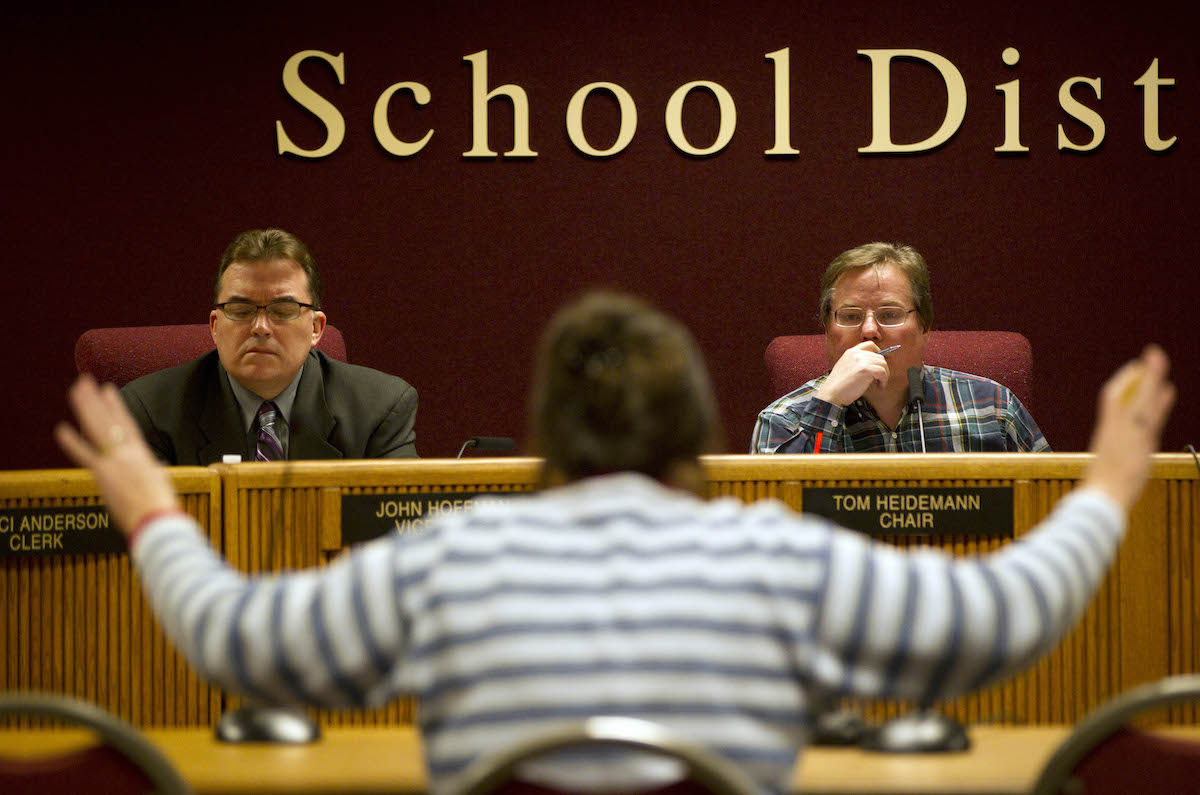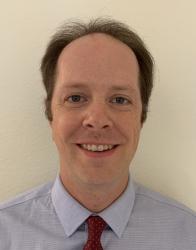In a commencement speech at Kenton College, American writer David Foster Wallace started with an anecdote, “There are these two young fish swimming along and they happen to meet an older fish swimming the other way, who nods at them and says, ‘Morning, boys. How’s the water?’ And the two young fish swim on for a bit, and then eventually one of them looks over at the other and goes, ‘What the hell is water?’”
As Wallace explained: “The point of the fish story is merely that the most obvious, important realities are often the ones that are hardest to see and talk about.” Nowhere is this more true than in the modern American education system. Whether public or private, every school operates on the same progressive principles developed over a century ago. Consequently, few people today even have the capacity to question it. It’s the “water” they’ve all been swimming in all their lives, and it will require substantial strength of effort even to see it.
Fortunately, bestselling writer and Fox & Friends co-host Pete Hegseth and classical education director David Goodwin take on this challenge in their new book Battle for the American Mind: Uprooting a Century of Miseducation. Overall, it’s an ambitious book with a lot to say about current problems as well as alternatives, and although Hegseth and Goodwin occasionally stray into idealism, they make a compelling case for rejecting the progressive educational project and returning to traditional schooling.
Hegseth (the main writer of the book) and Goodwin (who’s performed most of the research) begin by describing the current situation in public schools. The problems have now become familiar: American students are being indoctrinated in leftist ideology, learning to hate their country and see themselves as victims of an unfair system. Not only does this message fail at preparing young people for adulthood; it leads to a generation of “cultural serfs seeking new grievances and with limited economic prospects,” which precipitates “division and chaos.”
All this is by design, of course, part of larger campaign to capture the culture. Right now this involves replacing traditional American content that encouraged virtue, patriotism, and general competence with progressive programs—the 1619 Project, Howard Zinn revisionism, Common Core, critical race theory, etc.—that do the opposite. This is what most parents can see, so this is what they tend to protest.
But the real transformation of education occurred at the pedagogical level. Unlike curriculum, which is “what is being specifically taught,” pedagogy “refers to the methods, and purposes of teaching.” Hegseth and Goodwin rightly stress the connection between pedagogy and the kinds of graduates schools are producing: “Pedagogy is the act of formulating a culture in children,” a culture informed by a new vocabulary, mode of thinking, standards, and values informing every assignment and activity.
This kicks off a longer discussion about paideia, a concept so extensive and deep that the writers spend much of the rest of their book defining it. In short, “Paideia is made up of ideas, presumptions, beliefs, affections, and ways of understanding that define us.… Like DNA determines our physical attributes, paideia determines our cultural attributes.” Paideia isn’t reducible to education; there are other institutions that factor into paideia, like churches, media, and family. Yet schools remain at the heart of it.
For most of American history, schools helped cultivate a Western Christian Paideia (WCP). The pedagogy and curriculum reflected Christian morality, made use of Western classics, and “set children on a lifelong search for greater meaning.” However, at the turn of the 20th century, progressive intellectuals led by philosopher John Dewey sought to replace WCP with American Progressive Paideia (APP). Like many progressives today, Dewey believed that schools should replace the liberal arts with a practical education that would train people for a vocation and basic citizenship.
A liberalizing Protestant church establishment went along, and an organized elite looking to change the culture naturally approved, so APP spread consistently throughout public schools. The next great phase in its development was the cutting out of religion altogether, which Hegseth traces back to the Gary Plan: “The Gary Plan, rather than including Christianity in its program, allowed for students to leave school for religious education during the school day.” This effectively severed religious instruction from the daily curriculum and made a fully secular education possible.
Once APP had infiltrated most public and private schools, American culture began to change significantly. Whereas in the past, Americans shared a “vision of the good life,” practiced “Christian virtues,” and developed “intellectual virtues that made [them] freethinkers,” Americans were now being molded to adopt “scientism (science is the only say to find truth), equity/equality (there is nothing better or worse, just different), individualism (identity politics), neo-Marxism (the government can and should solve all inequalities), along with a host of other modern and postmodern affections that lead to servitude (it’s all about your job).”
This brings Hegseth to the most recent phase of American education—“the Cultural Marxist Paideia” (CMP). Unlike APP, which at the very least made some pretense of upholding Western civilization, CMP is based on the idea of “‘equity’ vested in individual identity.” In practice, this means a paideia devoid of standards, goals, or purpose. Everyone lives their own truth, creates their own reality. Although Hegseth doesn’t say too much about CMP, he’s likely correct to assert that the leftist insanity that makes headlines today “is just starting to gain steam,” since all such movements tend to manifest themselves most broadly a generation later.
The alternative? Hegseth makes his case for Classical Christian Education (CCE). If conservative Christians are serious about saving Western civilization, they need to embrace this model before it’s too late. He celebrates a humanistic CCE program based on the trivium, “which trains students in reasoning and persuasion,” and the quadrivium “which trains students in a philosophical form of science,” even as he concedes that walking into a Classical Christian school “sounds like something out of a period movie.” Yet it beats out today’s progressive schools, resulting in happier students who score higher on the SAT and “learn to think well. Very well.”
Finally, true to his military background as well as the title of his book, Hegseth gives a “battlefield assessment for retaking the American mind.” To achieve victory, he calls for an all-out insurgency—something he knows about after being a counterinsurgency instructor in Afghanistan. This would come in three phases: (1) “organization and preparation,” (2) “guerrilla warfare” and “establishing parallel structure,” and (3) “conventional warfare” and “defeating the enemy.” According to Hegseth, the CCE movement is in the later stage of the first phase, establishing a network of Classical Christian schools and make inroads among more and more parents. Ideally, this would lead to the second phase, wherein Classical Christian schools become a legitimate rival to government schools, and finally to the third phase, when CCE would be the predominant model and government schools would retreat to the fringes.
For the most part, Battlefield of the American Mind is well argued and moves at a relatively brisk pace. Hegseth is particularly good at simplifying complex ideas, connecting the dots, and keeping a goal in mind. It’s evident that his partner, Goodwin, knows education theory, and he helps make a strong case for returning to a Western Christian Paideia. For conservatives wanting to understand the guiding philosophy of education of the past few centuries, the combined forces of these two men create a readable yet profound and informative introduction.
Nevertheless, the very qualities that make Hegseth an ideal voice for conservatives organizing an educational insurgency tend to hurt a thoroughgoing analysis of the situation. Neither Hegseth nor Goodwin is an educator, and this prevents them from understanding why and how the American Progressive Paideia took root in the first place. Unlike the Western Christian Paideia, which was suited to a smaller, more ideologically homogeneous society, APP was much better suited to accommodating a modern, diverse, technocratic society. Hegseth never bothers explaining how exactly a student trained in the liberal arts is supposed to function in such a society, nor does he ever answer Dewey’s objections that the liberal arts should be reserved for the elites who seem best suited for it.
He also both overestimates and underestimates today’s educators. Like most conservative critics, Hegseth simply assumes they all act in lockstep and follow a leftist script. After performing 16,000 hours of instruction, from kindergarten to 12th grade, these teachers have supposedly created mindless foot soldiers primed for a Marxist revolution. Being a teacher myself, I can attest that this is not the case. The reality is much messier, with a mix of progressive and conservative teachers and students making their way through a paideia that contains both progressive and classical elements. Moreover, I would add that far more kids are now being brainwashed by TikTok than by their teachers, though Hegseth completely misses this, since he’s probably recalling his own time as a student instead of talking to actual educators.
With that said, Hegseth and Goodwin deserve a great deal of credit for taking on this subject. For too long, conservatives have ceded the issue of education to progressives, leaving parents and educators without a framework or vocabulary to articulate an alternative. No longer. They now have something that can meet this great need and help them fight the cultural battles of the present day. As Hegseth makes clear, they will be fighting a movement that has grown over the course of a century, but victory becomes possible once people can visualize the ideal and take the necessary steps to realize it.

